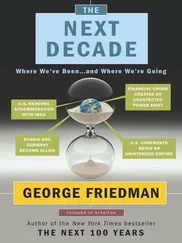A spouse can also serve as a buffer against stress. After a bad day at work, having a loving friend on hand to relax with you is very calming. But what if your spouse nags, complains, and picks at the marital scabs as soon as you walk in the door?
The point is, there is no doubt that a spouse or life partner can do many wonderful things to promote health, but such a list is not scientific evidence supporting the prescription of marriage. In fact, seeking a spouse to promote your health may not work at all!
Methodology and Marital Madness
The first flaw in the “get married to live longer” advice becomes apparent with a close reading of the relevant scientific studies. It turns out that the studies show that it is not married people who live longer but rather married men . The bulk of the evidence in various studies does not show much, if any, advantage for married women.
But there is much more. There is a well-known scale—a measure of stress—called the Social Readjustment Rating Scale. It was developed in the 1960s, though it has been updated and refined in recent years. 51 51 To read about Holmes and Rahe’s original scale see T. H. Holmes and R. H. Rahe, “The Social Readjustment Rating Scale,” Journal of Psychosomatic Research 11, no. 2 (1967): 213-18.
A high score on this scale epitomizes what both professionals and the lay public commonly mean when they say, “Oh, you’ve been under a lot of stress lately!” There is good agreement that stressful events involve such things as being fired from a job, being arrested, or losing a friend.
Accumulate enough of these nerve-racking assaults in a short period of time and your risk of illness skyrockets. The most stressful event is generally thought to be the death of one’s spouse or life partner, but divorce ranks a close second place. (In a previous chapter we talked about parental divorce; here we are examining the effects of one’s own divorce.) Divorce can devastate relations with various family members, disrupt finances, crush self-esteem, and destroy one’s sense that the world is a predictable and understandable place. It is not surprising that this serious stress has long been considered relevant to health and longevity. We thus wondered about the role of divorce in the ties between marriage and long life.
Dr. Joan Tucker, who began as a graduate student in our lab analyzing marriage and longevity and is now a leading scholar on social relations and health, helped launch our efforts to understand marriage’s links to health. 52 52 For further reading on our initial study of marital history and long life, see J. S. Tucker, H. S. Friedman, D. L. Wingard, and J. E. Schwartz, “Marital History at Midlife as a Predictor of Longevity: Alternative Explanations to the Protective Effect of Marriage,” Health Psychology 15 (1996): 94-101.
The issue is maddening in its complexity. If marriage were like a new drug, we could give the drug to some people, and give a placebo to a group of comparison folks (the control group). But most people would not take kindly to being randomly assigned to get married.
If marriage effects were primarily physiological, like the effects of vitamin D (the sunshine vitamin), we could conduct a study like a vitamin investigation in which we compare the health of people with different diets and supplements and sun exposures, from different climates, and with different blood levels of the vitamin. But in studying marriage, we had to face the complex reasons why individuals get and stay married—a wide variety of personal reasons, social influences, and societal expectations.
Looking at the data as of the year 1950, when the Terman participants were about forty years old, Joan pointed out that while many were now married, some had previously been divorced. Others, like James, were likewise now married but still to their first spouse—we called them “steadily married.” Both groups were married but had traveled different pathways—a difference worth examining.
Other Terman participants were now divorced. They had not remarried. And there was a fourth group—individuals who had always remained single. Other researchers had not been able to study marriage versus remarriage, and divorce versus singlehood across time. This division into four groups was the conceptual breakthrough we needed! Without looking at divorce and remarriage, a researcher might erroneously miss the fact that individuals may have very different marital histories—a fact that emerged as very important.
Are You Remarried, Steadily Married, Divorced, or Steadily Single?
The Remarried Group
We began with those people who were married as of the year 1950 but had previously been divorced. Take Philip, for example. He and Arlene married in 1935 and soon had a daughter. Although their marriage was bumpy at times, they always worked things out and were generally happy. In 1941, however, Philip was called overseas, where he remained until the end of World War II. The couple grew apart and their marriage suffered. When Philip returned home in 1945, they tried to mend their strained relationship but finally agreed on a divorce, which was final in 1947. Soon thereafter Philip met and married a woman he felt “really understood” him; they were still together and doing well in 1950.
The Steadily Married Group
These people, too, were married as of 1950, but had never been divorced. James, for example, met Irene on a blind date, set up by mutual friends. If it wasn’t “love at first sight” there was certainly a shared interest, and they began dating steadily and exclusively within a few weeks of that first meeting. A recent college graduate, James was employed as public relations officer for a large international firm; he had a good income and was ready to begin a family. When he asked Irene to marry him, just six months after their first date, she quickly agreed. Their engagement wasn’t long—only a few months. Irene finished out that semester at college but did not return for the following term after their January wedding. Instead, she set about keeping their home. Over the next five years they had three children, whom Irene cared for at home until they began school. In 1950, with their youngest child about to enter the teen years, James reported satisfaction with his life and his accomplishments. He was still employed with the same company and still married to the same woman.
The Divorced Group
Barbara was one of those people who had previously married but was now divorced. Like her peers in this group, she was unmarried as of midlife in 1950. After their divorce, Fredrick had moved to another state to start over, but Barbara had remained in the town where they’d lived together. She was still in the same job as a social worker and reported that being able to help people brought her a lot of joy and happiness. In fact, most of her time was devoted to her work, although she sometimes joined friends for dinner or an evening of playing cards. She also reported that she had taken up drawing—she had always loved art but hadn’t seen herself as a very creative person—but after two classes she saw that she was good, particularly with charcoal. Drawing became a fun and relaxing hobby. Although Barbara viewed her failed marriage as a disappointment, she had continued to live her life and felt she hadn’t suffered any real emotional problems as a result of the divorce.
In contrast, many other divorced Terman participants took things badly and remained somewhat bitter. Donna, for example—perhaps primed by the experience of her own parents’ divorce—never rebounded from her own divorce into remarriage. Her trust was shaken, she was wary of relationships, and even her friendships seemed to suffer as she focused her life around supporting and raising her children.
Читать дальше











